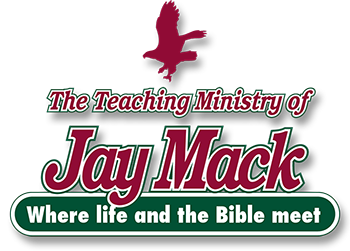God Called the Dry Ground Land,
and the Gathered Waters He Called Seas
1: 9-13
God called the dry ground land, and the gathered waters He called seas DIG: What happened on the third day of creation? Why does God stop naming on this day? How do we know Elohim did not use evolution to create the world? What does the “appearance of age” mean? Can one specie become another? What does this say about the theory of evolution? Who did God create this perfect environment for?
REFLECT: In the Bible when God names someone or something, they become His possession. For example, He renamed Abram, Abraham (Genesis 17:5); He renamed Sari, Sarah (Genesis 17:15); He renamed Jacob, Israel (Genesis 32:28); and in the New Covenant, He renamed Simon, Peter (John 1:42). If you are a believer in Yeshua ha-Meshiach, how does it make you feel to know that you are also given a new name by Him (Revelation 2:17)?
And God said signals the beginning of a third day where the earth is still uninhabitable, shoreless, and covered with water. But now there is a third separation by ADONAI. The light had been divided from the darkness on day one, there was a vertical separation of water that remained on the earth from the water above the expanse on day two, and now a horizontal division of land and seas on the third day.
Here again, Elohim spoke matter into existence. There are no restrictions on what God does; the laws of nature simply do not apply to Him. And our understanding of science should never put God in a box. No explanation of how the world began is rational without an all-wise, all-powerful Creator. Adding billions of dinosaur years to the process doesn’t solve the problem; it merely pushes it further back in time (to read more about his click – here). In the final analysis, only a miracle can account for the creation of the universe. We simply need to take ADONAI at His Word.

The first action: Let the water under the sky be gathered to one place, and let dry ground appear (1:9a). Tremendous chemical reactions started with these words. The vast array of minerals and rocks settled so that the heavier materials would sink while the lighter materials would rise. The net result was that the earth was formed – its crust, its mantle, and its core. Surfaces of solid earth appeared above the waters and an intricate network of channels and reservoirs opened up in the crust to receive the waters retreating off the rising continents. A complex network of channels connected all the waters.The Septuagint (the Greek translation of the TaNaKh) uses the word sunagogen here. It is the same word from which we get the word synagogue, meaning a gathering place. So the waters surrounding the earth were gathered into one place. This might describe the formation of one massive continent because most geologists today believe that today’s continents come from a single mass. But the seas and the earth are not the same today as they were then because the earth has changed so drastically since the Flood (6:1 to 8:14).25 Thus, dry ground emerged for the first time out of the water.
The fulfillment: And it was so (1:9b). The Word was there when God gave the sea its boundary so the waters would not overstep His command, and when He marked out the foundations of the earth (Proverbs 8:29). Other scriptures in the TaNaKh describe this event as well (Job 26:10-12, 38:8-11; Psalm 74:13 and Jeremiah 5:22). During the creation of the second and third day water is mentioned seven times.
The naming: Finally when these foundations of the earth (see my commentary on Isaiah, to see link click Ik – Listen to Me, O Jacob, Isra’el Whom I Have Called, the Sovereign LORD Has Sent Me with His Spirit) had been perfectly laid: God called the dry ground land or earth (eretz). This is the same name used in 1:1 and 2, and shows that the formless matter that Elohim had originally created is the same matter used here. All of this was accomplished during the first part of the third day of creation. Now the earth, the sea and the sky are ready for life. And the gathered waters He called seas (1:10a). This is the last time in the creation story that ADONAI names anything. God continues to create, but He does not name. That responsibility will be given to man once he appears on the scene (2:19, 20, 23; 3:20; 4:17, 25-26; 5:3 and 29).
The evaluation: And God saw that it was good (1:10b). As a result of the LORD’s evaluation, the work of the second day was completed.
Then, again, Elohim said signals the beginning of a second miracle on this day. Plant life will appear because He spoke it into existence. God did not “use” evolution to create the world; it was an immediate result of His sovereign command. And this represents one of the puzzling steps of creation that evolution cannot explain: the generation of life from nothing. Evolution can only deal with systems that are already working. Something that does not exist cannot “evolve.” Evolutionists don’t even want to discuss this issue because they have no answers. It is the weakest part of their argument. They go from supposed “scientific facts” to guesswork. They cannot compete with ADONAI; it is no contest. Therefore, evolution utterly fails to explain how life began.26
The second action: Here we see exactly how it happened. God spoke: Let the land produce vegetation: seed-bearing plants and trees on the land that bear fruit with seed in it, according to the various kinds (1:11a). Vegetation of every kind appeared immediately. The three main divisions of plant life are mentioned. Vegetation (deshe eisev) is a general term that includes grass and grain; seed-bearing plants (mazria zera) refer to herbs, which include bushes, shrubs, and vegetables; trees that bear fruit (eitz pri) are simply fruit trees.
The most important point of this verse is that these plants were created fully grown. They were not created as seeds, but full-grown plants with seeds in them. Thus, they had the “appearance of age.” This was a necessary part of real creation. Adam was created as a full-grown man, the trees were created as full-grown trees, and the whole universe was made as a functioning unit, complete and fully developed right from the beginning.27
The fulfillment: And it was so. The land produced vegetation: plants bearing seed according to their kinds and trees bearing fruit with seed in it according to their kinds (1:11b-12a). The Hebrew word for kinds (min) is roughly comparable to the English word species. The fact that plants, animals and people reproduce according to their own species is a fundamental principle of genetics. Each has a unique DNA structure, with genes and chromosomes that determine all its characteristics. There can be variations within species, but one specie cannot become another. The crucial phrase: according to their kinds (1:11, 12, 21, 24, 25) categorically rules out the possibility of evolution because eachspecie was carefully distinguished from each other. Plants could only reproduce plants, trees could only produce trees and animals could only produce animals. In particular, the Bible precludes the evolution of new kinds! Speaking of the resurrection of bodies of believers after Christ returns, Rabbi Sha’ul says: But God gives each kind of specie a body as He has determined, and to each kind of seed He gives its own body. All flesh is not the same: Men have one kind of flesh, animals have another, birds another and fish another (First Corinthians 15:38-39). If we believe the Bible, that should end that argument.
The evaluation: And God saw that it was good (1:12b). There is order and balance to the universe. This order points to the all-wise hand of an intelligent Creator.
The numbering of each day: And there was evening, and there was morning – a third day. The terms evening (ereb) and morning (boqer) each occur more than one hundred times in the TaNaKh, and always have the literal meaning – this is, the termination of the daily period of light and the termination of the daily period of darkness, respectively. Similarly, the occurrence of day modified by a numeral (for example, a third day) is a construction occurring more than a hundred times in the Torah alone, and always with a literal meaning. Even though it may challenge our minds to visualize the lands and seas, and all plants being formed in one literal day, that is exactly what the Bible says! We are not justified at all either in questioning God’s power to do this or His truthfulness in telling us that He did it.28
Of all the days of creation, the third day brought about the most spectacular changes. At the beginning of the day the earth was covered with water, but at the end of the day it was covered with lush, green vegetation of all kinds, next to a blue ocean. No wonder God saw that it was good. It was a perfect environment for the creature Elohim planned to make in His own image.



Leave A Comment